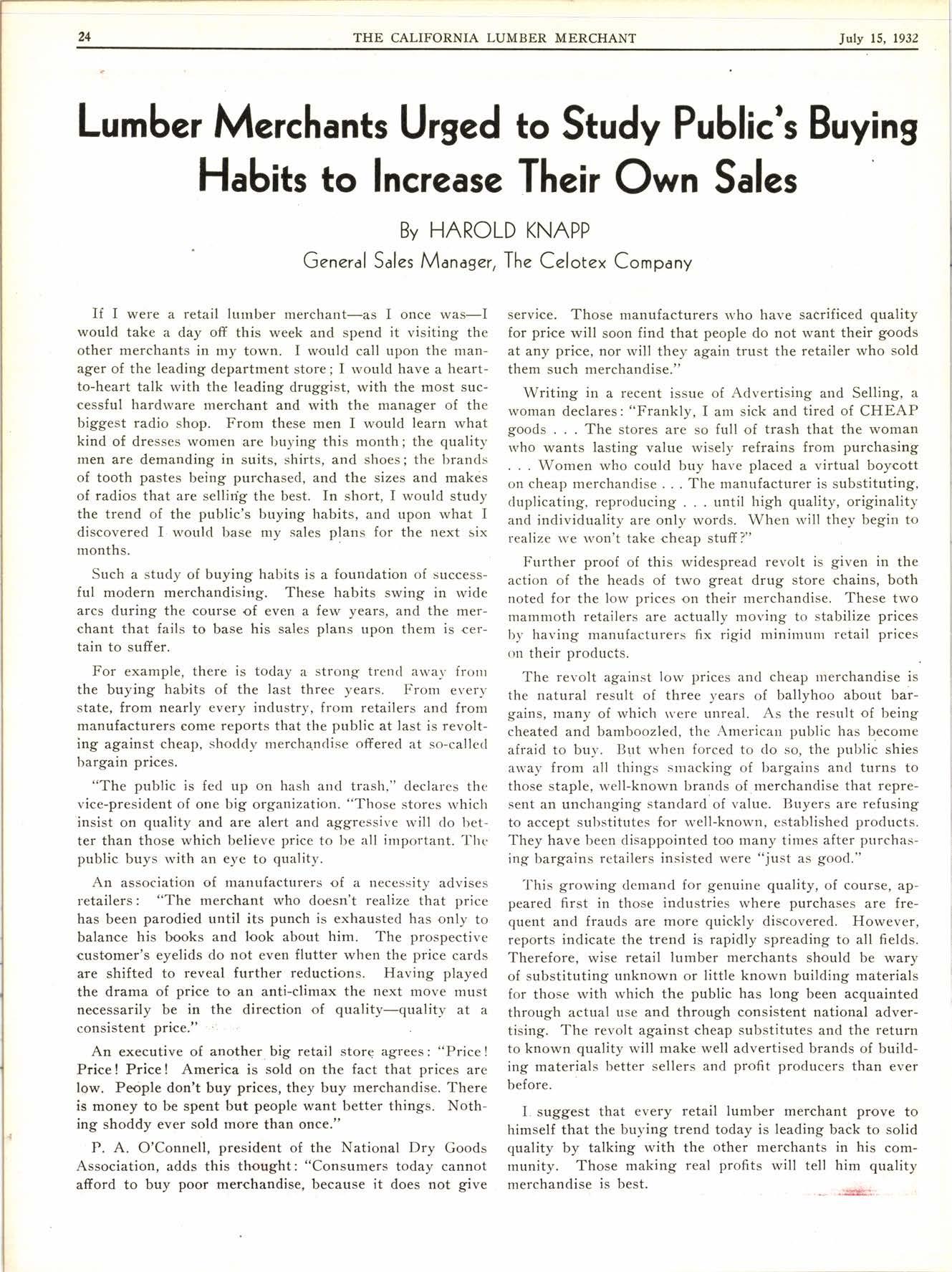
3 minute read
Ltle Aviation Exhibition New Lumber Rate to Gulf Ports Saving To Be Held July 17 for Export to Cuba in Effect
The premier demonstration of the Trusty Life Saving Invention, showing four passengers seated in their chairs parachuted simultaneously, will be held at the Los Angeles Municipal Airport (Mines Field), Redondo Boulevard and Imperial Highway (114th Street), on Sunday afternoon, July 17, 1932, at 2 p.^. The demonstration is for the benefit of Aviators' Post of the American Legion. The admission price is 25 cents.
Seattle, Wash., July S.-Notification has been received by the West Coast Lumbermen's Association that the Interstate Commerce Commission has decided not to suspend the 6¢ rate on lumber from the Pacific Northwest to Gulf of l\{exico ports for export to Cuba. The new rate was scheduled for effect July 1.
The reduced rate was initiated by the transcontinental railroads to compete rvith all water transportation, as well as to grant competitive opportunities to inland lumber producers who could not reach tide-lvater shipment economically. Following a protest of the Southern Pine Association the West Coast Lumbermen's Association frled an answer with the commission in defense of the new rate's legality and emphasizing the necessity for downward revision of all rail rates on lumber from this region if the railroads are to share in the distribution of Pacific Coast lumber into the areas reached by long hauls. In line with the recommendation of the West Coast Lumbermen's Association, the commission denied the petition for suspension and the rate, as scheduled, has gone into effect.
\(/est Coast Lumber Outlook
The new automatic parachute equipment is the invention of Harry P. Trusty of Los Angeles. This new device makes it possible for the pilot to send his passengers groundward by parachute, the passengers being surung through separate doors in the side of the ship, dropping them in the same chairs they occupy in the cabin of the plane.
In addition to the life-saving demonstration, there rvill be many other interesting airplane features on the program.
Returns From Island Trip
Jim Farley, asSistant Western sales manager of The Pacific Lumber Company, San Francisco, accompanied by Mrs. Farley, arrived in San Francisco on the Matson Line steamer Malolo July 7 from a seven weeks' trip to the Hawaiian.Islands. While in the Islands Mr. Farley called on various buyers and users of lumber and found that a better per capita market for lumber exists there than in any other territory he has visited. This is mainly due to the fact that they build over there a great many single wall houses with solid wooden partitions. Wooden shingles predominbte, he found, as roofing material, orving to the very heavy rainfall. For this reason, too, very little stucco is used. One lumber company he visited has no less than 4O jobs in spite of the depression.
Many California retailers will be interested to hear that he had a good visit with Hugh Alderman, former salesman for The Pacific Lumber Company, and had a ride on his surf board. He also enjoyed the privilege of a ride in an outrigger canoe with the two brothers of Duke Kahanamoku, world famous swimmer, and themselves great swimmers and water polo players.
Jim visited all four of the most important islands and reports having had a very enjoyable time.
Seattle, Wash., July 10.=-Production of rnills in the Douglas fir region of Oregon, Washington and British Columbia reporting to the West Coast Lumbermen's Association averaged 19.7 per cent of capacity during June while orders averaged 24 per cent of capacity and exceeded production by 15.3 per cent. Shipments averaged 25.3 per cent of capacity and were 20.5 per cent greater than production. Inventories during the four weeks of June decreased 7.8 per ,cent. Orders reported have held steadily around 58,000,000 feet per week; production averaged 50,000,000 feet weekly and is decreasing.
Prices received by the industry for its products in June averaged $9.25 per thousand feet at the mill-all gradesand set a lower mark than any recorded since 1889, which was $8.67.
Some favorable signs are beginning to appear. Too lorv prices are shutting off production and thus reducing mill offerings; large crops and values betterments for stable agriculture products such as beef and pork, if continued, are most likely to create lumber consumption on farms; retail stocks are extremely low with buying becoming more difficult; a scarcity of homes is seen in some suburban areas ; increased rural builtiing and repairs is occurring in connection with the "back-to-the-land" shift in population; and greater programs of public ,construction are expected; all are factors expe,cted to increase lumber consumption. In addition broken stocks at the mills are being reflected in higher prices in a few items and the effects of the lumber tariff is beginning to be felt.









